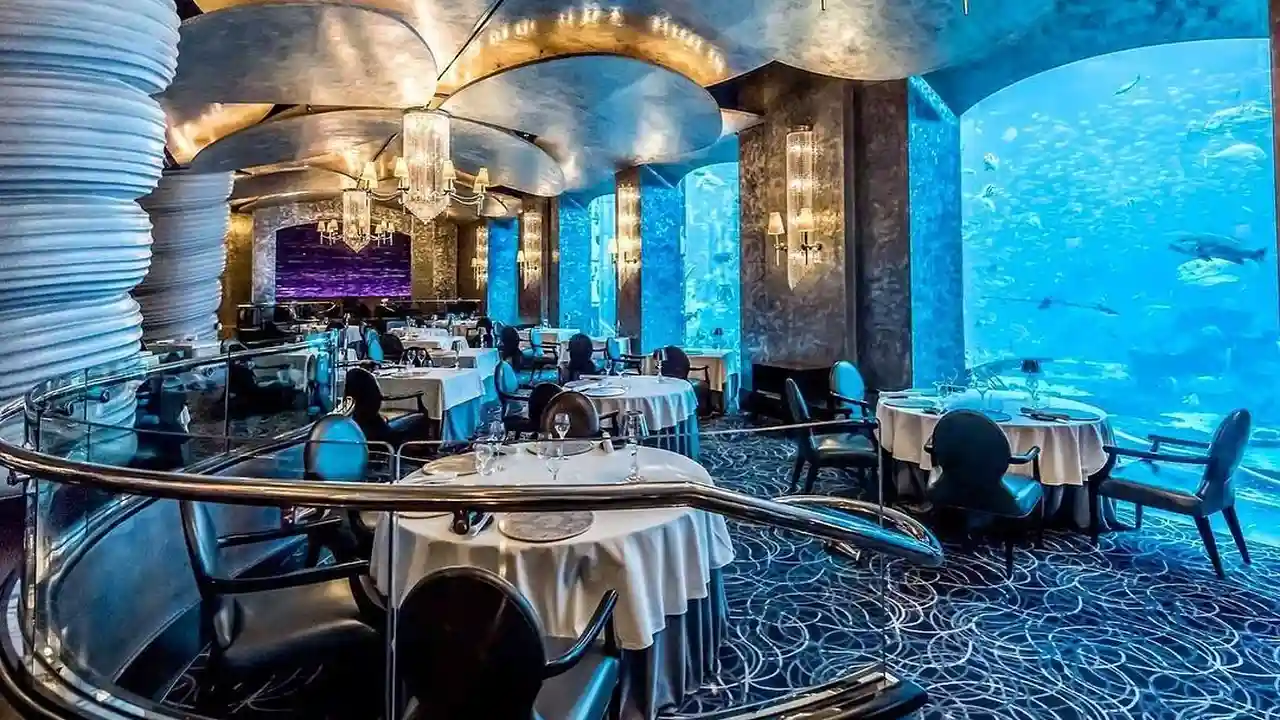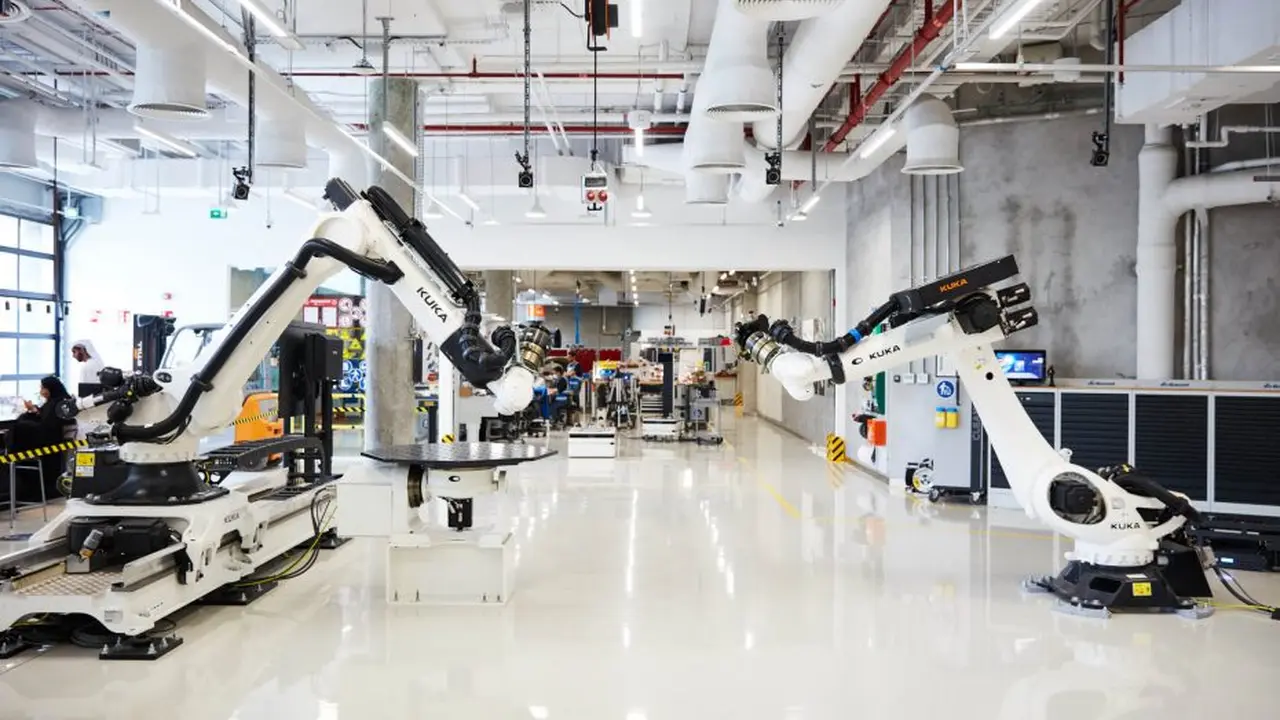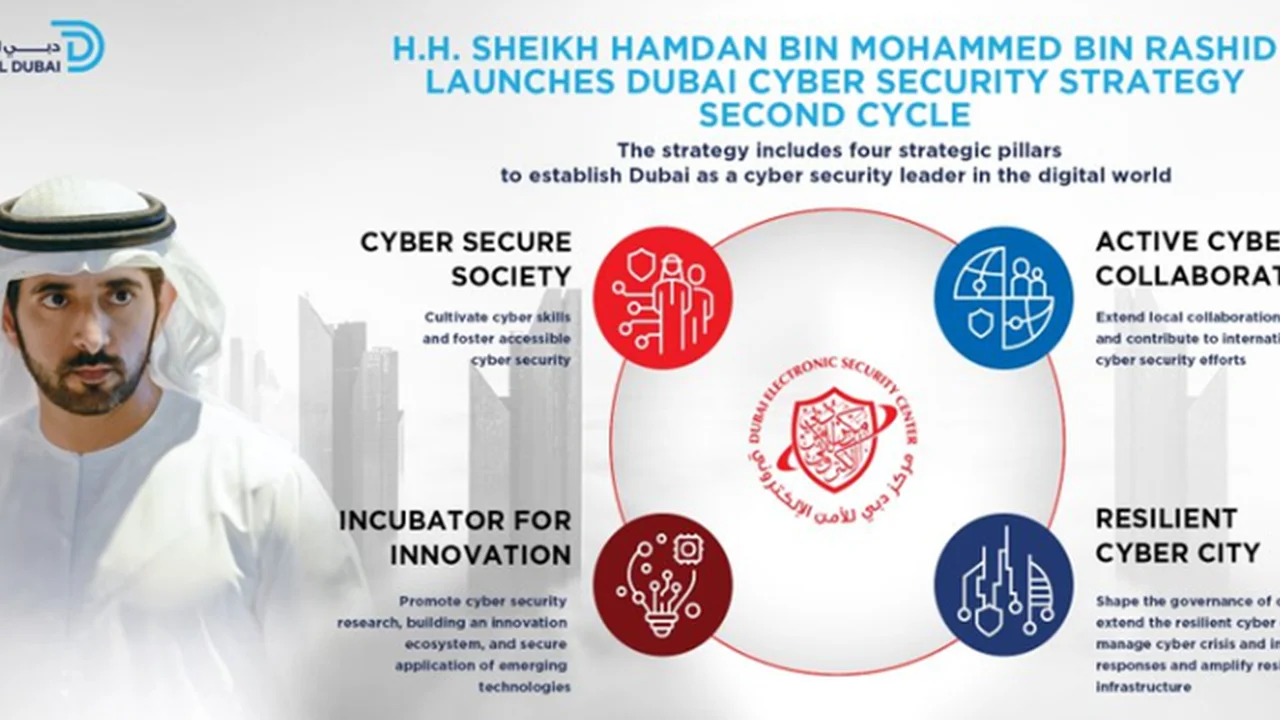Floating Restaurants_ A Unique Dining Experience in UAE

Exploring the Allure of Floating Architecture Design
Floating architecture, a captivating blend of innovation and environmental consciousness, is rapidly gaining traction in the world of design. Imagine structures that gracefully interact with water, offering breathtaking views and a unique sense of tranquility. This is the essence of floating architecture, and it's more than just a passing trend; it's a sustainable solution for adapting to rising sea levels and creating extraordinary living spaces.
The appeal of floating architecture lies in its ability to seamlessly integrate with the natural environment. Unlike traditional buildings that often disrupt the ecosystem, floating structures minimize their impact, allowing marine life to thrive and preserving the delicate balance of aquatic environments. Furthermore, the adaptability of floating structures is a significant advantage. They can be easily relocated or reconfigured to meet changing needs, making them ideal for coastal regions and areas prone to flooding.
The Rise of Floating Hotels A New Era of Hospitality
Floating hotels represent a paradigm shift in the hospitality industry, offering guests an unparalleled experience that combines luxury, sustainability, and adventure. These innovative establishments are designed to float on water, providing breathtaking views and a unique sense of serenity. Unlike traditional hotels, floating hotels minimize their environmental impact, often incorporating renewable energy sources and sustainable materials.
The benefits of floating hotels extend beyond their eco-friendliness. They can be constructed in areas where land is scarce or unsuitable for traditional development, opening up new opportunities for tourism and economic growth. Moreover, floating hotels offer a unique level of privacy and exclusivity, attracting discerning travelers who seek an unforgettable experience.
Case Study The Floating Seahorse A Luxurious Underwater Villa
The Floating Seahorse is an extraordinary example of floating architecture, showcasing the potential of underwater living. These luxurious villas, located in Dubai, offer stunning views of marine life and a unique sense of immersion in the aquatic environment. Each villa features multiple levels, including underwater bedrooms and living areas, allowing guests to observe the vibrant coral reefs and diverse marine species that inhabit the surrounding waters.
The design of the Floating Seahorse incorporates sustainable materials and energy-efficient technologies, minimizing its impact on the marine ecosystem. The villas are also equipped with advanced water filtration and waste management systems, ensuring the preservation of the pristine waters surrounding the development.
Innovative Floating Structures Redefining Urban Landscapes
Floating structures are not limited to hotels and villas; they can also be used to create innovative urban spaces that address the challenges of overcrowding and rising sea levels. Floating platforms can be used to create parks, residential areas, and commercial districts, providing much-needed space in densely populated cities.
The advantages of floating urban structures are numerous. They can be easily adapted to changing needs, relocated to different locations, and designed to withstand extreme weather conditions. Moreover, floating structures can enhance the aesthetic appeal of urban landscapes, creating vibrant and dynamic spaces that attract residents and tourists alike.
Comparing Floating Hotels and Traditional Hotels A Detailed Analysis
Choosing between a floating hotel and a traditional hotel depends on individual preferences and priorities. Floating hotels offer a unique and unforgettable experience, combining luxury, sustainability, and adventure. They are ideal for travelers who seek a unique perspective and want to minimize their environmental impact.
Traditional hotels, on the other hand, offer a wider range of amenities and services, catering to a broader range of travelers. They are often located in convenient locations and offer a more predictable and familiar experience. However, traditional hotels may not be as environmentally friendly as floating hotels and may not offer the same level of privacy and exclusivity.
Here's a breakdown of the key differences:
- Experience: Floating hotels offer a unique and immersive experience, while traditional hotels offer a more familiar and predictable experience.
- Sustainability: Floating hotels are often designed with sustainability in mind, while traditional hotels may not prioritize environmental concerns.
- Location: Floating hotels can be located in areas where land is scarce or unsuitable for traditional development, while traditional hotels are typically located in established urban areas.
- Cost: Floating hotels may be more expensive than traditional hotels due to their unique design and construction costs.
- Amenities: Traditional hotels typically offer a wider range of amenities and services than floating hotels.
The Environmental Benefits of Floating Architecture Sustainable Solutions
Floating architecture offers a range of environmental benefits, making it a sustainable solution for coastal regions and areas prone to flooding. Floating structures minimize their impact on the marine ecosystem, allowing marine life to thrive and preserving the delicate balance of aquatic environments.
Floating structures can also incorporate renewable energy sources, such as solar panels and wind turbines, reducing their reliance on fossil fuels. Moreover, floating structures can be designed to collect rainwater and recycle wastewater, conserving precious water resources.
Product Recommendation Ocean Builders SeaPod A Revolutionary Floating Home
For those looking for a truly unique and sustainable living experience, the Ocean Builders SeaPod is a compelling option. This revolutionary floating home offers a blend of luxury, innovation, and environmental consciousness. Designed to be self-sufficient and eco-friendly, the SeaPod is a testament to the future of sustainable living.
Key Features of the Ocean Builders SeaPod:
- Sustainable Design: Built with eco-friendly materials and designed to minimize environmental impact.
- Self-Sufficient: Equipped with solar panels, water purification systems, and waste management systems.
- Modular Design: Can be customized to meet individual needs and preferences.
- Smart Home Technology: Integrated with advanced smart home technology for convenience and efficiency.
- Stunning Views: Offers breathtaking views of the surrounding ocean.
Use Cases for the Ocean Builders SeaPod:
- Residential Living: A unique and sustainable alternative to traditional housing.
- Vacation Home: A luxurious and eco-friendly getaway.
- Research Facility: A platform for marine research and conservation.
- Eco-Tourism: A sustainable and immersive tourism experience.
Pricing: The price of the Ocean Builders SeaPod varies depending on the configuration and customization options. Contact Ocean Builders directly for a personalized quote. Expect a starting price around $250,000 USD.
Detailed Look at the Engineering Behind Floating Structures
The engineering behind floating structures is a complex and fascinating field, requiring a deep understanding of hydrodynamics, structural mechanics, and materials science. Floating structures must be designed to withstand the forces of wind, waves, and currents, while also maintaining stability and buoyancy.
The foundation of a floating structure is typically a pontoon or a series of pontoons that provide buoyancy. These pontoons are designed to displace enough water to support the weight of the structure and its occupants. The pontoons are also designed to distribute the weight evenly, ensuring stability and preventing the structure from tipping over.
The structural frame of a floating structure is typically made of steel or concrete, providing strength and rigidity. The frame is designed to withstand the forces of wind, waves, and currents, while also supporting the weight of the walls, roof, and other components.
The materials used in floating structures must be durable and resistant to corrosion. Steel and concrete are commonly used for the structural frame, while composite materials and plastics are used for the walls, roof, and other components.
The Future of Floating Cities A Vision for Sustainable Urban Development
Floating cities represent a bold vision for the future of urban development, offering a sustainable and adaptable solution for addressing the challenges of rising sea levels, overcrowding, and resource scarcity. These innovative urban centers would be built on floating platforms, providing housing, jobs, and amenities for thousands of residents.
Floating cities would be designed to be self-sufficient and environmentally friendly, incorporating renewable energy sources, water purification systems, and waste management systems. They would also be designed to be adaptable to changing needs, allowing them to be relocated or reconfigured as necessary.
The development of floating cities is still in its early stages, but several projects are already underway around the world. These projects are demonstrating the feasibility and potential of floating cities as a sustainable and innovative solution for urban development.
Navigating the Legal and Regulatory Landscape of Floating Structures
The legal and regulatory landscape surrounding floating structures is still evolving, as governments and international organizations grapple with the unique challenges and opportunities presented by this emerging technology. Issues such as ownership, jurisdiction, and environmental protection must be addressed to ensure the responsible development and operation of floating structures.
In many countries, the legal status of floating structures is unclear. They may be considered vessels, buildings, or some other type of structure, depending on their design and use. This uncertainty can create challenges for developers and operators, as they may not be able to obtain the necessary permits and licenses.
International organizations, such as the United Nations, are working to develop a framework for regulating floating structures. This framework would address issues such as environmental protection, safety, and security, ensuring that floating structures are developed and operated in a responsible manner.
The Economic Impact of Floating Architecture A Growing Market
The market for floating architecture is growing rapidly, driven by increasing demand for sustainable and adaptable solutions for coastal regions and areas prone to flooding. Floating hotels, floating homes, and floating urban structures are attracting significant investment, creating new jobs and economic opportunities.
The economic benefits of floating architecture extend beyond the construction and operation of the structures themselves. They also include the development of new technologies, the creation of new industries, and the attraction of tourism and investment.
As the market for floating architecture continues to grow, it is expected to create significant economic opportunities for businesses and individuals around the world.
Maintenance and Longevity Ensuring the Durability of Floating Structures
Maintaining the longevity and durability of floating structures requires a proactive and comprehensive approach to maintenance and repair. Regular inspections, preventative maintenance, and timely repairs are essential to ensure that floating structures can withstand the harsh marine environment and continue to provide safe and reliable service for years to come.
Key aspects of maintenance include:
- Hull Inspection: Regularly inspecting the hull for damage, corrosion, and marine growth.
- Pontoon Maintenance: Ensuring the pontoons are properly sealed and inflated.
- Structural Inspections: Checking the structural frame for cracks, corrosion, and other damage.
- Mechanical Systems Maintenance: Maintaining all mechanical systems, such as pumps, generators, and HVAC systems.
- Electrical Systems Maintenance: Maintaining all electrical systems, such as wiring, lighting, and power distribution systems.
By implementing a comprehensive maintenance program, owners and operators can ensure the longevity and durability of their floating structures, maximizing their investment and minimizing the risk of costly repairs.
:max_bytes(150000):strip_icc()/277019-baked-pork-chops-with-cream-of-mushroom-soup-DDMFS-beauty-4x3-BG-7505-5762b731cf30447d9cbbbbbf387beafa.jpg)






